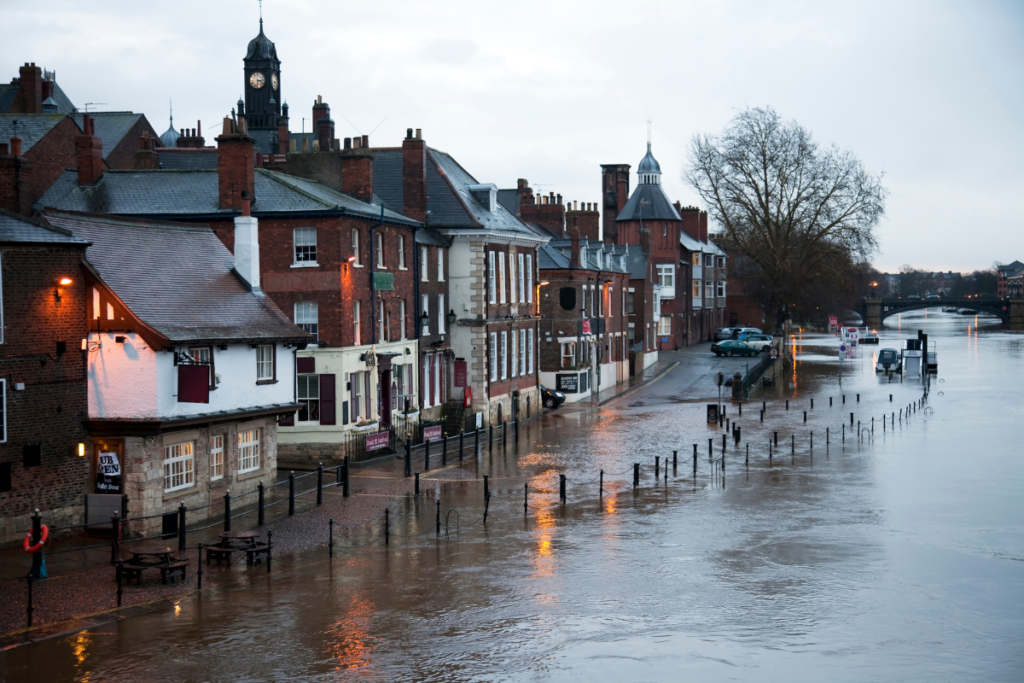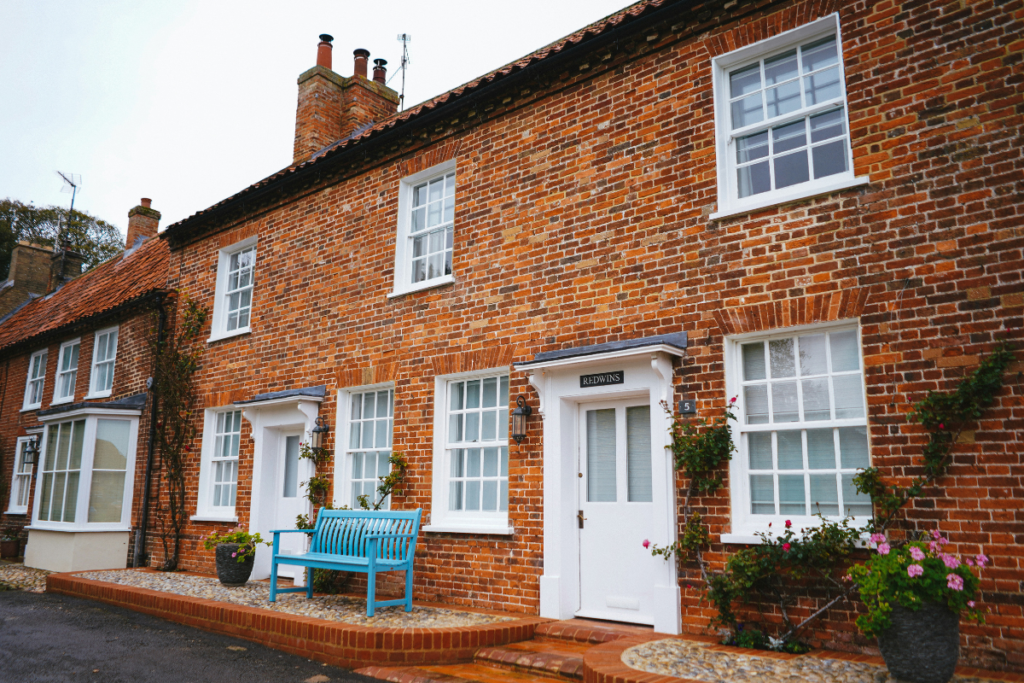Flooding is one of the most common natural disasters in the UK, and its impact can be devastating. Flood insurance offers financial protection against water damage caused by extreme weather, such as heavy rain, overflowing rivers, or coastal storms. But do you need it, and how does it work?
In this guide, we’ll cover everything you need to know about flood insurance, from who needs it to what it covers and how to find the right policy for your home.
Table of Contents
Who needs flood insurance?
Flooding is more common than you might think. According to the Environment Agency, over 5 million properties in England are at risk of flooding, whether from rivers, surface water, or the sea.
Even if your home hasn’t flooded before, it’s worth checking whether you live in a high-risk area. You can do this using the UK Government’s Flood Map for Planning, which shows the likelihood of flooding in different locations across England.
If your home is in a floodplain or near a body of water, you’re more likely to need flood insurance. However, even homes in lower-risk areas can experience flooding due to unexpected events, such as blocked drains or flash floods caused by heavy rain.
What does flood insurance cover?
Flood insurance helps repair or replace your property and belongings if they’re damaged by flooding. Some home insurance policies automatically include flood cover, while others may require you to add it as an optional extra.
A comprehensive flood insurance policy typically covers:
- Structural damage: Repairs to walls, floors, and foundations caused by water damage.
- Contents: Replacement of furniture, electronics, and other belongings damaged by floodwater.
- Temporary accommodation: Costs for staying elsewhere if your home becomes uninhabitable.
Not all policies are created equal, so it’s important to check the details. For example, some policies may not include outdoor structures like garages or sheds. If you want to insure your home’s contents, ensure your policy includes sufficient cover for valuable items.
While floods can happen anywhere, homes in high-risk areas often face exclusions or higher premiums. If you’re comparing home insurance providers, make sure you ask about the level of flood protection they offer.
Costs and government support
Flood damage can be incredibly expensive to repair, with the average cost in the UK sitting at around £32,000. Without flood insurance, homeowners would have to cover this amount out of pocket, which could be financially devastating.
Several factors affect the cost of flood insurance, including:
- Your property’s location: Homes in high-risk areas generally have higher premiums.
- Your home’s history: If your property has flooded before, insurers may charge more.
- Your property type: Ground-floor flats, bungalows, and other homes that are more exposed to flooding may face higher premiums.
For homeowners in high-risk areas, the UK Government’s Flood Re scheme helps make flood insurance more affordable. Flood Re works with insurers to subsidise premiums, ensuring that properties with the greatest risk of flooding can still access affordable cover.
If your flood insurance premiums seem high, it’s worth checking whether your property is eligible for Flood Re.
Flood insurance for renters and homeowners
If you’re renting a property, you might assume flood insurance isn’t necessary since landlords are responsible for the building. However, landlords’ insurance doesn’t cover your personal belongings
Tenants should consider adding insurance for flooding to their rental home insurance policy to protect their possessions. Renters living in ground-floor flats or homes in flood-prone areas are particularly vulnerable to damage.
For homeowners, flood insurance provides peace of mind that your biggest asset—your home—will be protected. With extreme weather events becoming more common, protecting against weather damage is more important than ever.
How to choose the right flood insurance policy
When deciding on a flood insurance policy, there are several things to look out for:
- Extent of coverage: Make sure your policy covers both the building and its contents. If it doesn’t, you may need additional coverage for items like furniture or electronics.
- Exclusions: Some policies exclude certain types of water damage, such as gradual leaks or poor maintenance. Read the small print carefully.
- Excess fees: Check how much you’ll need to pay out of pocket before the insurer steps in. Higher excess fees may reduce your premium, but they could leave you with higher upfront costs if you need to claim.
Reviewing your policy regularly is also important. Changes to your home or personal circumstances—like moving to a flood-prone area or upgrading your possessions—might require you to review your home insurance policy.
Tips to reduce flood risk and premiums
While flood insurance provides financial protection, taking proactive measures can reduce the risk of damage and potentially lower your premiums.
These are particularly helpful if you live in a high-risk area or receive a flood warning. Some measures are permanent, while others can be put in place temporarily during times of heightened risk.
Permanent flood prevention steps
If your home is in a flood-prone area, making permanent adjustments can help minimise damage and make your property more resilient:
- Raise electrical outlets and wiring: Moving sockets, fuse boxes, and other electrical components above anticipated flood levels can prevent water damage to your home’s power systems. This is particularly important for ground-floor properties or bungalows.
- Install flood-resistant doors and windows: Replacing standard fittings with flood-resistant options can prevent water from entering your home during heavy rains or storms.
- Use water-resistant materials: When renovating, consider water-resistant materials for floors, walls, and skirting boards. For example, tiles or sealed concrete are less likely to suffer long-term damage than wooden flooring or carpets.
Temporary flood defences
If there’s a flood warning in your area, taking temporary measures can minimise the immediate risk:
- Set up sandbags and barriers: Sandbags, flood gates, and airbrick covers can block water from entering your home. These are inexpensive and easy to use, making them a practical solution during flood alerts.
- Move valuables to higher ground: Store important documents, electronics, and sentimental items on upper floors or high shelves to keep them out of harm’s way.
- Clear gutters and drains: Blocked drainage can worsen flooding. Make sure your gutters and outdoor drains are free from debris before a storm hits.
By combining these permanent and temporary measures, you can reduce the impact of flooding and lower the likelihood of extensive damage.
Even with these precautions, flood insurance is a valuable safety net for protecting your finances and ensuring peace of mind.
Final thoughts
Flooding is an unpredictable but growing concern for homeowners and renters in the UK. Whether you live in a high-risk area or not, flood insurance provides valuable protection against the unexpected.
Start by checking your flood risk using the Government’s Flood Map and reviewing your current policy to see if it includes flood cover. For homes in high-risk areas, the Flood Re scheme offers affordable options to help you stay protected.
By taking these steps, you can protect your property, possessions, and peace of mind. Don’t wait for the worst to happen—get the right cover in place today.
Get a policy that meets your needs
We’ve partnered with some of the UK’s top home insurance brokers to give you the best possible choice.



